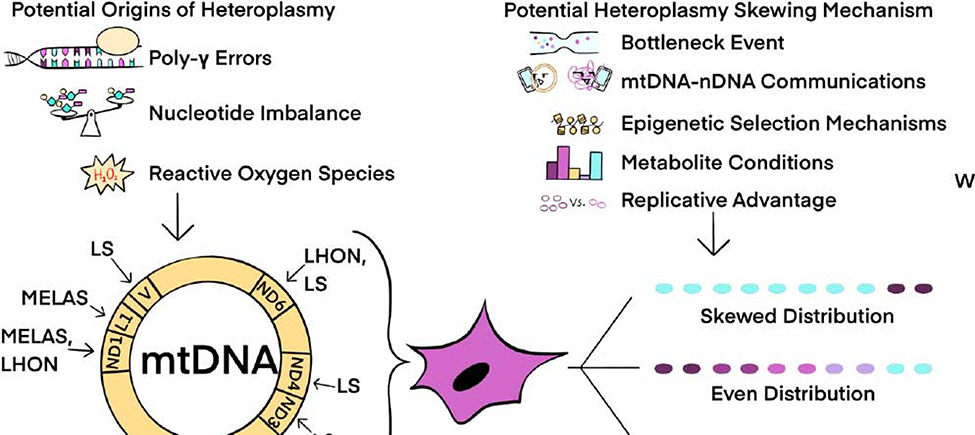Figure 3.
Potential Origins and Mechanisms of mtDNA Heteroplasmy Shifts During Reprogramming. Every nucleated somatic cell typically contains more than one mtDNA sequence. This situation, called heteroplasmy, can result from mtDNA point mutations and deletions due to several potential mechanisms, including Pol γ replication errors, nucleotide imbalances, and reactive oxygen species-induced mtDNA damage. Fibroblast cell lines with heteroplasmic mtDNA mutations that result in MELAS (Mitochondrial Encephalopathy and Lactic Acidosis Syndrome), LS (Leigh Syndrome), LHON (Leber’s Hereditary Optic Neuropathy), and MERRF (Myoclonic Epilepsy with Ragged Red Fibers) human mtDNA diseases or syndromes have been reprogrammed to iPSCs. Resulting iPSCs can exhibit any of three different potential heteroplasmy patterns between WT and mutant mtDNA, including skewed, even, and retained mtDNA distributions. The mechanism(s) for generating these three distinct mtDNA distributions are not understood, although described mechanisms for somatic cell and germ cell shifts in heteroplasmy may operate during reprogramming and can include a genetic bottleneck, mtDNA-nDNA communication, epigenetic memory, metabolite conditions, and replicative advantages for certain mtDNA sequences. These factors, or their combinations, could lead to the heteroplasmy variations reported for individual iPSC clones.

